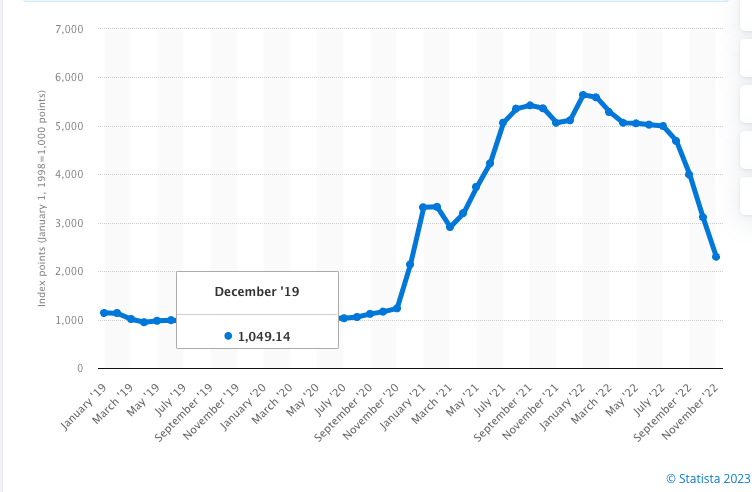How to build supply chain resilience in volatile times
Written by Ian Wylie Tuesday 07 February 2023
When trends in freight costs look like this, it’s hard to build supply chain resilience. This chart (from Statista.com) shows that costs of shipping containerized freight from China to Europe increased significantly between January 2019 and November 2022, before dropping dramatically during 2022.

What do such trends mean for consultants and their clients? The Business Continuity Institute (BCI) reports that the level of supply chain disruption reported by organisations is still more than twice as high as pre-pandemic levels. Almost half of respondents said they’d experienced issues with their closest “Tier 1” suppliers during 2022, while a quarter experienced disruptions at the Tier 2 level. Economic slowdowns, talent shortages and geopolitical conflicts such as Russia’s invasion of Ukraine and US-China tensions mean there are still many challenges ahead for supply chains.
And yet the BCI report warned that businesses were also displaying a level of “overconfidence” – unchanged from pre-pandemic levels. Just one in three organisations had checked their Tier 1 suppliers’ business continuity plans. Fewer than six in ten firms reckoned their key suppliers had business continuity plans in place, putting the whole supply chain at risk.
Keep reading to learn how consultants view supply chain threats
Register for Free Access
Not yet a Member, Subscriber or Friend? Register as a CMI Friend for free, and get access to this and many other exclusive resources, as well as weekly updates straight to your inbox.
You have successfully registered
As a CMI Friend, you now have access to whole range of CMI Friendship benefits.
Please login to the left to confirm your registration and access the article.
